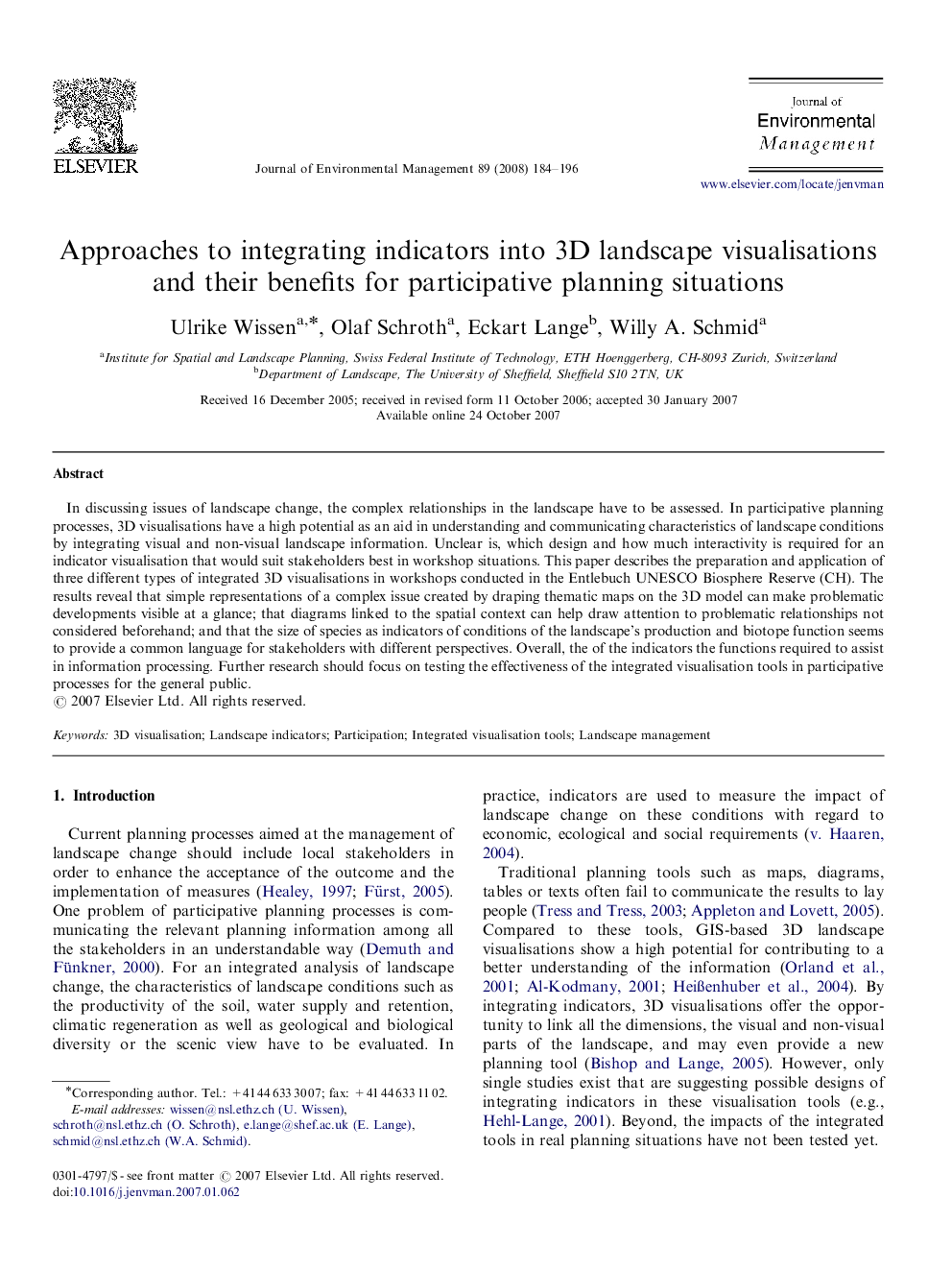| Article ID | Journal | Published Year | Pages | File Type |
|---|---|---|---|---|
| 1057451 | Journal of Environmental Management | 2008 | 13 Pages |
In discussing issues of landscape change, the complex relationships in the landscape have to be assessed. In participative planning processes, 3D visualisations have a high potential as an aid in understanding and communicating characteristics of landscape conditions by integrating visual and non-visual landscape information. Unclear is, which design and how much interactivity is required for an indicator visualisation that would suit stakeholders best in workshop situations. This paper describes the preparation and application of three different types of integrated 3D visualisations in workshops conducted in the Entlebuch UNESCO Biosphere Reserve (CH). The results reveal that simple representations of a complex issue created by draping thematic maps on the 3D model can make problematic developments visible at a glance; that diagrams linked to the spatial context can help draw attention to problematic relationships not considered beforehand; and that the size of species as indicators of conditions of the landscape's production and biotope function seems to provide a common language for stakeholders with different perspectives. Overall, the of the indicators the functions required to assist in information processing. Further research should focus on testing the effectiveness of the integrated visualisation tools in participative processes for the general public.
